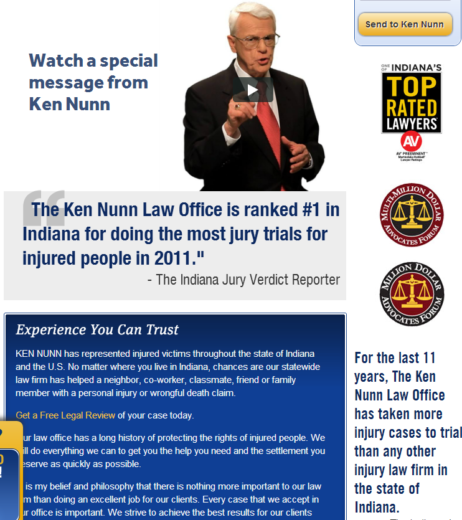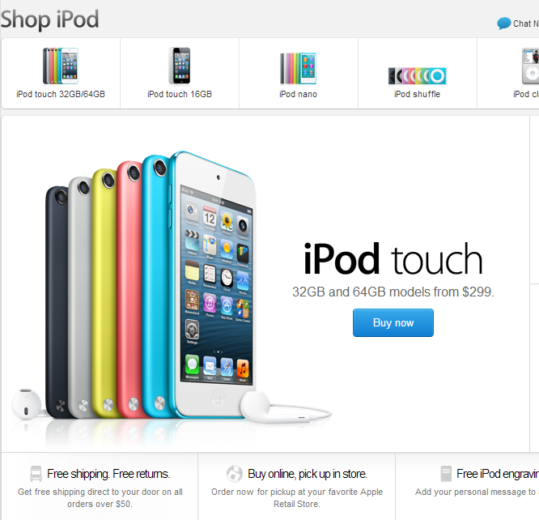I recently attended Conversion Conference up in Chicago and one of the most interesting takeaways was that we need to get better at tailoring our landing pages to visitors’ awareness levels. I don’t mean whether or not they’ve had their morning coffee, but rather where they lie on a scale of ‘they have no clue about you, your product, pricing or why they might need it’ to ‘they know everything about it’.
It’s extremely difficult to create copy that appeals to everyone. The trick is to work out how you can appeal to different types of users and send them to pages that match up with their expectations.
Let’s take a quick look at the different awareness levels of your customers. In this case I’m going to take the fictional example of a fitness website:
Completely Unaware
Customers who are completely unaware might not understand the importance of fitness or losing weight. You will appeal to these users with stories and secrets. For example you might tell the story of someone who increased their fitness level and show how their life improved. You could list the potential medical issues associated with not getting enough exercise.
Problem Aware
A user who is problem aware understands that they have an issue (in this case that they are unfit or overweight). However, they do not know how to fix the problem. It’s no good telling them about the benefits of getting fit as they already know this – they need to be sold on the benefits of your products and any anxieties they might have. Things like trust symbols, a list of the benefits of your way of solving their problem – why exercise is a better solution than diet pills in the case of your fitness site.
Solution Aware
Once people are aware of their problems and how to solve them – “I am unfit, and that isn’t good, and I know I should be exercising more” – you need to focus on proving that your product is what they want to buy. The customer will be asking themselves at this point “why should I buy this type of exercise equipment? What makes fake fitness company’s machines worth my time?” To counter this, you want to provide things like testimonials, video reviews, statistics that back up your products, and evidence of everything working well.
Example:
I found a local injury lawyer website from here in Indiana. Most people who’ve suffered losses as a result of an accident are likely to realize that they can receive compensation in court, however only a small percentage are likely to have a good reason to pick one law firm over another. Hence those sites tend to focus in on evidence of success, testimonials and proof of good practice.
Product Aware
Further up the awareness scale you have people who are already aware of the product you are trying to sell and are researching where to buy it from. Once people reach this stage your key strategy is going to be activating that trigger which convinces people to buy from you. In a lot of cases that is going to be price related – in other words what deals or discounts is your site giving that makes the customer want to buy from you? A large proportion of sites out there skip straight to this step, however you want to make sure this messaging is targeted at the right users. Someone who doesn’t recognize that they need your product is not going to be wowed by a discount.
Totally Aware
Total awareness means users who have decided they need your product, and that they want to buy it from your site. For these people the trick is to keep things simple and not to scare them away. Make sure they can see the product (they know they are in the right place buying the right thing) and the price (that it matches what they expected to pay).
Example:
The Apple site is really good at this – big picture of the iPod, easy to spot pricing and a big ‘Buy now’ button.
Getting Users To Convert
BJ Fogg, founder of the Persuasive Technology Lab at Stanford University, put together his model for Behavior Change:
Behavior = Motivation, Ability and Trigger
In all of the above cases we’re trying to work out which of these sides of the formula need the most work doing to them. For example, earlier in the awareness funnel we are working on Motivation (why you should buy this product, why from us, why it will help you). Later, we focus on triggers – price, discounts, deals – all the things that make us decide NOW is the time to buy. Once people are sold on purchasing, we have to make sure that Ability is 100% covered. If your site isn’t easy to navigate or purchase from (lacking payment options), you will lose those sure fire customers who were about to buy.
What does this mean for us?
The main takeaway is that we need to invest more time in working out where our customers are in the buying cycle, and then use this data to create tailored experiences that are more likely to drive higher conversion rates. Instantly you might be thinking that visitors from the Search Network who were actively looking for your product are going to want to see something different to users who happen to have their interests piqued by one of your display ads. Also, your remarketing ads might take people directly to pages designed to target high awareness customers.
You might also want to think about applying this to your PPC ad copy. Someone typing in ‘should I buy a recumbent bike’ would, in an ideal world, be taken to a much different landing page than someone typing in ‘Life Fitness R3 recumbent exercise bike deal’.
How do you find out your customers awareness level?
There are a number of tools available to you, which you can divide up into quantitative and qualitative measures.
- Surveys & Feedback – Use tools like SurveyMonkey or Qualaroo to ask your customers what they are looking for, or what they want to buy. Maybe ask customers to provide testimonials for why they used your site. Spend some time collating and making sense of this data until you can spot patterns.
- Google Analytics – What percentage of your users are new or returning? Which pages do they bounce from? How long do they spend on your page? Do they want to spend a long time reading stories or do they head straight to your cart?
- Heat & Scroll Maps – Try using tools like CrazyEgg or ClickTale to see where your users are looking on your page and figure out what they are looking for. Do you have whole chunks of text that no one cares about? Are there high interest areas tucked away?
- PPC Data – What keywords are people searching for? Do your Search Query Reports show a lot of research based queries (how do I, what is, should I) etc. or are people more direct (buy now, cheapest, where to buy).
Hopefully this has helped you get started on the journey towards perfectly tailored landing pages. If you have any experience with testing this out, we’d love to hear from you in the comments below!






